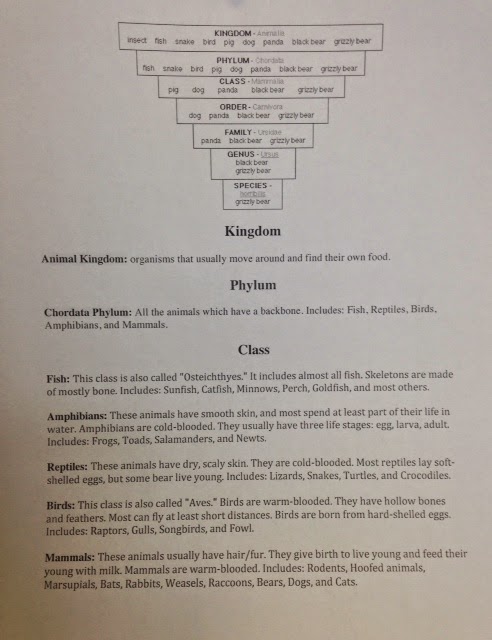The students finished up their landscapes today and then we
talked about animal classification. We
focused on Kingdom, Phylum, and Class that animals are identified by.
Then we played an eye spy game where they would give clues about the animal they are going to draw for their project.
Here is the worksheet I gave them to use when giving I spy clues:
On the back of this page is a cheat sheet to help them remember how to classify the animals.
When guessing their partners animal, they were given this sheet to help them narrow down their guesses.
The kids had a lot of fun guessing each others animals and I think the activity really helped them solidify what they had learned.
Now that the students know how to classify their animals, they are going to focus on drawing them. They read over their animal's descriptions again and highlighted the physical characteristics. For the next few days we are going make multiple cutouts of their animals using different textures. Today we went on a texture scavenger hunt in the room by rubbing crayons and paper on different surfaces. The students will eventually use these to cut out their animal and draw on top of them.







.JPG)

.JPG)

